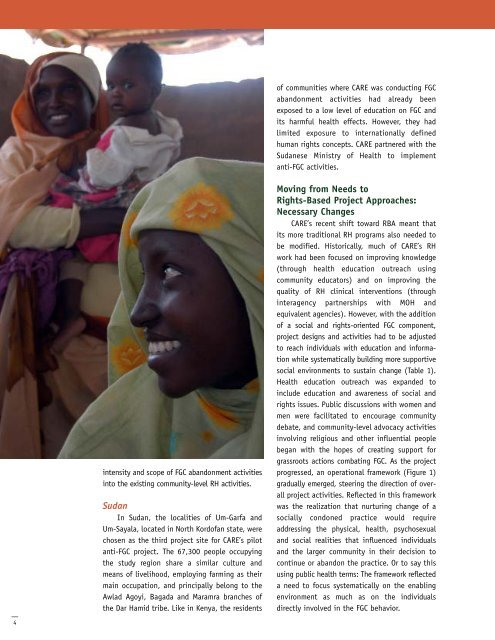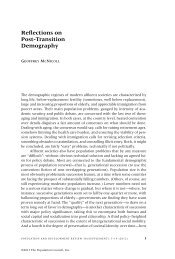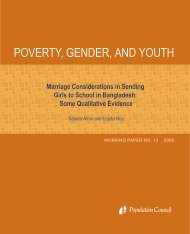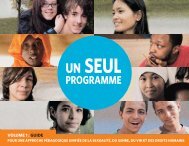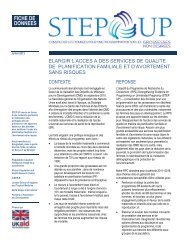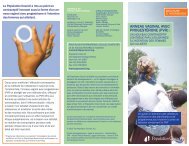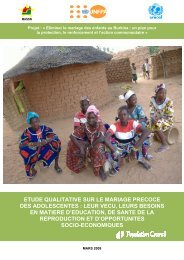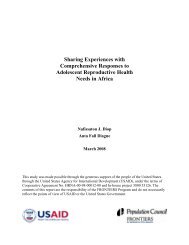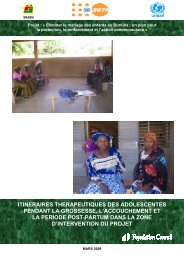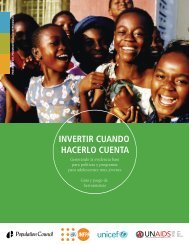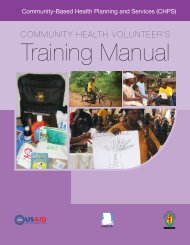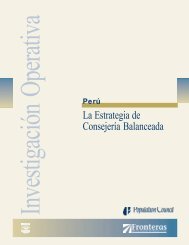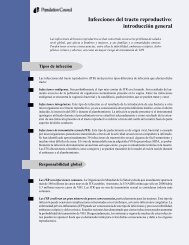CARE's Experiences Working with Communities toward ...
CARE's Experiences Working with Communities toward ...
CARE's Experiences Working with Communities toward ...
You also want an ePaper? Increase the reach of your titles
YUMPU automatically turns print PDFs into web optimized ePapers that Google loves.
|<br />
4<br />
intensity and scope of FGC abandonment activities<br />
into the existing community-level RH activities.<br />
Sudan<br />
In Sudan, the localities of Um-Garfa and<br />
Um-Sayala, located in North Kordofan state, were<br />
chosen as the third project site for CARE’s pilot<br />
anti-FGC project. The 67,300 people occupying<br />
the study region share a similar culture and<br />
means of livelihood, employing farming as their<br />
main occupation, and principally belong to the<br />
Awlad Agoyi, Bagada and Maramra branches of<br />
the Dar Hamid tribe. Like in Kenya, the residents<br />
of communities where CARE was conducting FGC<br />
abandonment activities had already been<br />
exposed to a low level of education on FGC and<br />
its harmful health effects. However, they had<br />
limited exposure to internationally defined<br />
human rights concepts. CARE partnered <strong>with</strong> the<br />
Sudanese Ministry of Health to implement<br />
anti-FGC activities.<br />
Moving from Needs to<br />
Rights-Based Project Approaches:<br />
Necessary Changes<br />
CARE’s recent shift <strong>toward</strong> RBA meant that<br />
its more traditional RH programs also needed to<br />
be modified. Historically, much of CARE’s RH<br />
work had been focused on improving knowledge<br />
(through health education outreach using<br />
community educators) and on improving the<br />
quality of RH clinical interventions (through<br />
interagency partnerships <strong>with</strong> MOH and<br />
equivalent agencies). However, <strong>with</strong> the addition<br />
of a social and rights-oriented FGC component,<br />
project designs and activities had to be adjusted<br />
to reach individuals <strong>with</strong> education and information<br />
while systematically building more supportive<br />
social environments to sustain change (Table 1).<br />
Health education outreach was expanded to<br />
include education and awareness of social and<br />
rights issues. Public discussions <strong>with</strong> women and<br />
men were facilitated to encourage community<br />
debate, and community-level advocacy activities<br />
involving religious and other influential people<br />
began <strong>with</strong> the hopes of creating support for<br />
grassroots actions combating FGC. As the project<br />
progressed, an operational framework (Figure 1)<br />
gradually emerged, steering the direction of overall<br />
project activities. Reflected in this framework<br />
was the realization that nurturing change of a<br />
socially condoned practice would require<br />
addressing the physical, health, psychosexual<br />
and social realities that influenced individuals<br />
and the larger community in their decision to<br />
continue or abandon the practice. Or to say this<br />
using public health terms: The framework reflected<br />
a need to focus systematically on the enabling<br />
environment as much as on the individuals<br />
directly involved in the FGC behavior.


